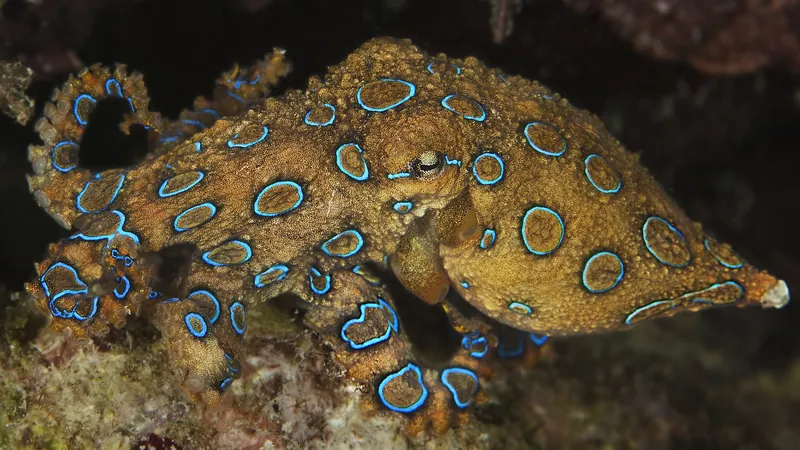
Ancient Fossil Revelation: Cambrian Mystery Unveiled as Chancelloriid Relative
2025-05-08
Author: Nur
A Shocking Transformation in Fossil Understanding
In a groundbreaking discovery, researchers from Yunnan University, Yuxi Normal University, and Durham University have fundamentally changed our understanding of a 500-million-year-old fossil known as Shishania aculeata, once thought to be an early mollusk. This remarkable spine-covered creature, discovered in the stunning landscapes of China's Yunnan province, is now identified as a distant relative of chancelloriids—fascinating sponge-like entities from the Cambrian era.
Misleading Features Uncovered
Initially, Shishania's unique anatomical structures, including what were believed to be mollusk-like features such as a muscular foot and specialized spines, painted a different picture. However, the latest fossil examinations revealed that these features were merely distortions resulting from a process called taphonomic illusion—essentially tricks of preservation that misled paleontologists.
Martin Smith, a key figure in the research, stated, “These ancient fossils turned out to be masters of disguise. What we thought represented the early outlines of mollusk ancestors was actually a complex illusion.” This realization prompted a complete reexamination of the fossil interpretation and raised eyebrows across the scientific community.
Unexpected Connections to Chancelloriids
Further analysis uncovered chancelloriids—specimens remarkably preserved alongside Shishania—in the same rock strata, leading to a significant reevaluation of Shishania’s classification. Chancelloriids, which vanished around 490 million years ago, were previously enigmatic beings distinguished by their star-shaped spines, hinting at deeper, more complex evolutionary links.
Implications for Evolutionary Biology
This breakthrough is monumental in understanding the evolutionary explosion of the Cambrian period, a time that set the stage for the emergence of all modern animal groups. Shishania aculeata's simple spine structure suggests that chancelloriids developed their intricate skeletal features independently, illuminating the origins of evolutionary complexity.
As Dr. Smith reflected on the initial thrill of discovering Shishania, he acknowledged, “The new material forced me to re-evaluate everything,” highlighting the constant evolution of scientific understanding.
Caution in Paleontology
The findings carry important implications for the interpretation of other ambiguous Cambrian fossils, urging scientists to tread carefully when drawing conclusions from incomplete physical evidence. This research allows for a clearer understanding of early mollusk evolution while providing insight into the origins of chancelloriids, thus enriching our grasp of evolutionary processes.
The research, showcasing stunning revelations from ancient history, is set to be published in the prestigious journal Science, paving the way for further explorations of the Cambrian period.



 Brasil (PT)
Brasil (PT)
 Canada (EN)
Canada (EN)
 Chile (ES)
Chile (ES)
 Česko (CS)
Česko (CS)
 대한민국 (KO)
대한민국 (KO)
 España (ES)
España (ES)
 France (FR)
France (FR)
 Hong Kong (EN)
Hong Kong (EN)
 Italia (IT)
Italia (IT)
 日本 (JA)
日本 (JA)
 Magyarország (HU)
Magyarország (HU)
 Norge (NO)
Norge (NO)
 Polska (PL)
Polska (PL)
 Schweiz (DE)
Schweiz (DE)
 Singapore (EN)
Singapore (EN)
 Sverige (SV)
Sverige (SV)
 Suomi (FI)
Suomi (FI)
 Türkiye (TR)
Türkiye (TR)
 الإمارات العربية المتحدة (AR)
الإمارات العربية المتحدة (AR)